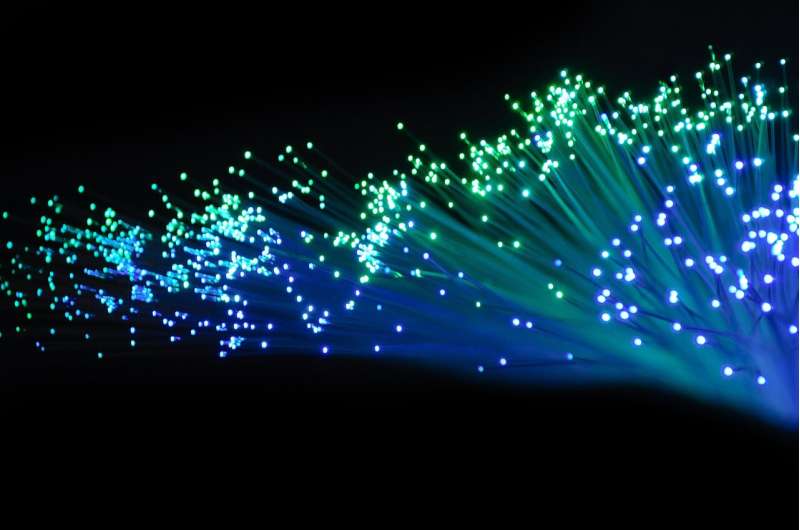Credit: CC0 Public Domain
Data traffic is rapidly growing and can soon overload the current internet infrastructure. The key to solve this overload problem is to improve the data transmission over optical fibers. Vinicius Oliari defended his Ph.D. on new, more accurate mathematical tools to better understand how light propagates through optical fibers the high power, nonlinear regime. These tools are an important step to the development of new transceiver structures that will improve transmission in optical fibers.
Optical fibers carry more than 99 percent of the internet traffic and their performance can still be improved. For that purpose, we need a better understanding on the fundamentals and behavior of optical fiber transmission.
To propagate information in an optical fiber, an optical signal containing the data in interest is used. This optical signal suffers from optical fiber effects, which will change its shape. This distortion can be sufficient to make the transmitted data unrecognizable at the receiver.
Compensating for fiber effects
Therefore, to reconstruct the transmitted data at the receiver, we need to compensate for the optical fiber effects. Compensating optical fiber effects requires mathematical knowledge on how they affect the transmitted signal. Oliari introduced novel mathematical models which are accurate in a regime that was not contemplated by the previously existing models in the literature. This regime is characterized by high nonlinear Kerr distortion, one of the major limiting effects in fiber propagation.
Knowledge on fiber effects can be used for improving data transmission. In particular, numerical fiber models can be combined with machine learning techniques and significantly increase data rates.
Significant gains
This combination can be used to optimize, for example, the transmitted signal or the receiver structure. In his Ph.D. research, Oliari optimized the transmitted signal by changing the geometry and probabilities of the transmitted symbols, which are a representation of the transmitted data.
Tailoring these symbols for the optical fiber channel has yielded significant gains over conventional approaches. The receiver optimization was also performed in this research by learning filter coefficients at the receiver. These filters were combined in a structure that resembles the optical fiber numerical model, providing high performance with low complexity when tested on experimental data.
More information: Channel Modeling and Machine Learning for Nonlinear Fiber Optics: research.tue.nl/en/publication … nlinear-fiber-optics
Provided by Eindhoven University of Technology
























